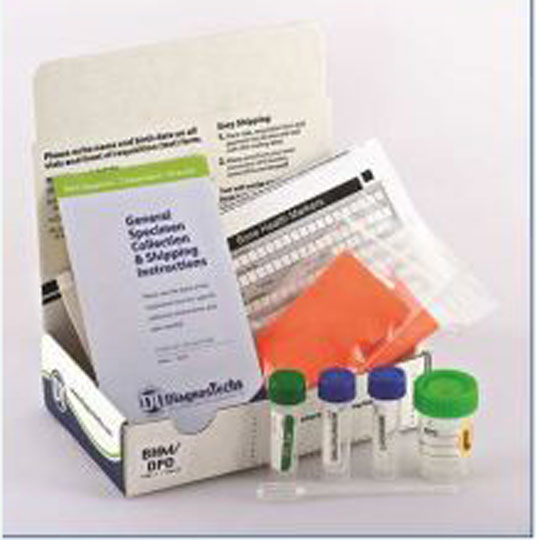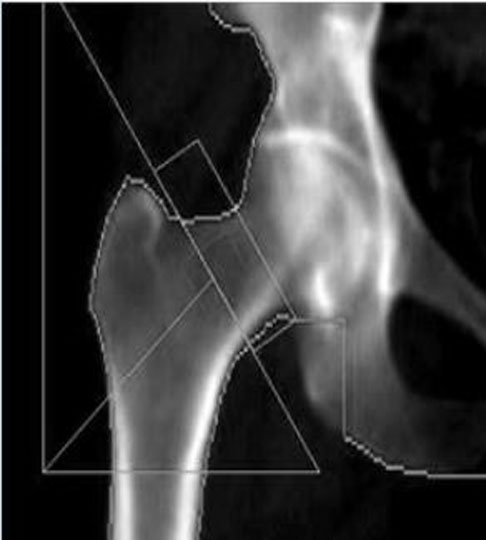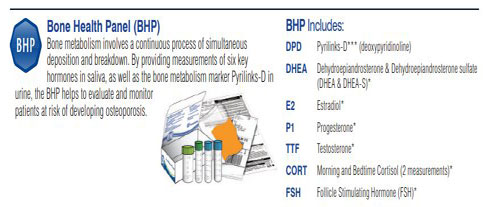Description
Bone Health Test Panel (BHP)
Convent and Non-invastive Test
Osteopenia and Osteoporosis Treatment Progress
Bone Health Test uses convenient, non-invasive saliva and urine testing to give you valuable information about your bone health. As you age, fluctuating estrogen, progesterone, testosterone, DHEA, cortisol, and FSH may affect your bone density.
These hormones can be measured to help evaluate and monitor your bones’ health and your osteoporosis risk.
The Bone Health Test Panel also measures the level of deoxypyridinoline, or Pyrilinks-D, from a urine sample. Pyrilinks-D is a specific marker of bone breakdown used to screen for excess bone loss and monitor osteoporosis treatments’ effectiveness.
Bone Density
Bone density is influenced by many factors such as genetics, vitamin D status, hormone levels, diet, and lifestyle. When bone density decreases below average, it is referred to as osteopenia.
If bone thinning continues to the point where the bone is at higher risk for breaking, it is referred to as osteoporosis. Early detection and intervention are essential for minimizing the loss of bone density and preventing fractures.
Although the standard procedure for evaluating bone health involves measuring specific biomarkers in the blood in combination with radiographic tests, the Bone Health Test Panel is a non-invasive and cost-effective way to screen for and monitor bone loss that does not involve radiation or blood draws.
Risk for Osteoporosis Increases if You Have Osteopenia
- Are 40 years of age or older
- Have a sedentary lifestyle
- Smoke cigarettes or consume alcohol
- Have previous fractures or a family history of osteoporosis or hip fractures
- Are you approaching or recently entered menopause
- Have low body weight
- Take glucocorticoid or steroid therapy long-term
- Have been diagnosed with diabetes, thyroid disease, kidney disease, or inflammatory bowel disease (IBD)
Why is it Essential to Prevent Fractures?
- Worldwide, one in three women and one in five men over 50 will experience an osteoporotic fracture.
- People suffering from a hip fracture have a 20% or greater risk dying the following year.
- One in three adults who lived independently before a hip fracture remains in a nursing home for at least a year after injury
- A 50-year-old woman has a 2.8% risk of death related to hip fracture during her remaining lifetime, equivalent to her risk of dying from breast cancer and four times higher than that from endometrial cancer*
Consider the Bone Health Test Panel (BHP)
- A preliminary screening if you are at high risk for osteoporosis
- Therapeutic monitoring during and after treatment for bone loss
- Hormone replacement therapy follow-up
- Monitoring conditions such as Paget’s disease, hyperparathyroidism, and other bone-related diseases
Why Saliva Instead of Blood
For hormones to be active, they must exist in their free state. In blood, most hormones are bound to proteins and are, therefore, inactive. It can be challenging to determine how much of a hormone measured in serum or blood is free and available to your cells. In saliva, however, hormones exist in their free state and are, therefore, bioavailable.
Convenient, Simple, Accurate
- The collection is non-invasive and painless.
- Saliva and urine samples can be conveniently collected in your home
- In saliva, the most active (free) form of each hormone is measured
- Pyrilinks-D in urine is a sensitive indicator of bone loss
- What to expect
Your test kit contains the supplies you need to collect your samples. Complete instructions regarding sample collection are included with your equipment.
You will need to refrigerate your samples until all collections are complete. Then you will package your selections in the box provided, affix the prepaid mailing label included with your kit (domestic only), and ship the completed kit from your nearest UPS location.
In approximately 1-2 weeks, you will receive your results and can then begin creating a customized plan to help you meet your health goals.
If you need help, Contact Dr. Brown to review your results in a professional naturopathic consultation. (additional fee)






